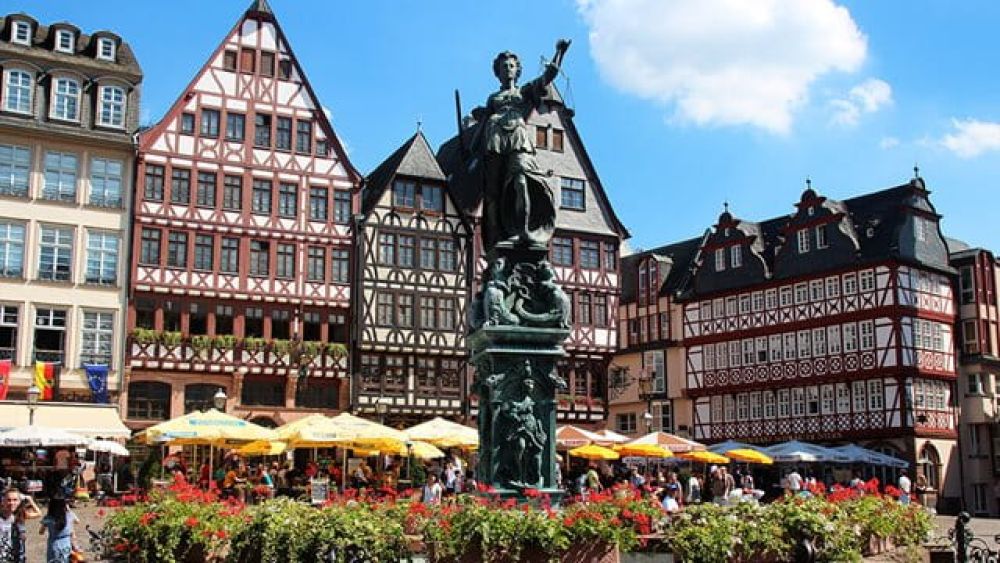

The heart of Frankfurt's Old Town, the Römerberg, is an iconic historic square known for its picturesque half-timbered houses, the Gothic-style Römer building, which has been the city hall for over 600 years, and the old St. Nicholas Church. The name "Römerberg" translates to "Roman Mountain," indicating its significance since Roman times. The Römer itself has been the center of political power in Frankfurt for centuries, witnessing many of Germany’s most crucial historical moments.
The area has been a hub of activity for many centuries, initially serving as the site for trade fairs during the Middle Ages. These fairs were foundational in establishing Frankfurt's importance in European trade, and subsequently made the Römerberg a must-visit destination for merchants and visitors alike.
Following the reconstruction efforts after World War II, which saw much of the historic Frankfurt destroyed, the Römerberg was meticulously rebuilt to reflect its original architecture. Since then, it has drawn both local and international tourists, solidifying its status as an essential stop in any Frankfurt itinerary. The combination of rich history, beautiful architecture, and the vibrancy of frequent cultural events has ensured a steady influx of visitors eager to experience a piece of Frankfurt's heritage.
Famous events like the Frankfurt Christmas Market, one of the oldest and most beautiful Christmas markets in Germany, have played a crucial role in the history of tourism at Römerberg. Year-round festivals and public gatherings continue to promote the area's significance, underscoring the importance of local culture in attracting tourists.
In recent years, there has been a trend towards experiential and cultural tourism in Römerberg. Visitors are not only interested in the architectural sights but also the stories, local cuisine, and cultural experiences that provide a deeper understanding of the area's historical context.
Eco-tourism and sustainable travel are also gaining traction, with more people looking for ways to reduce their carbon footprint while exploring new destinations. Frankfurt has responded by becoming more pedestrian-friendly, further highlighting Römerberg's appeal as it is best explored on foot. Additionally, the city's modern infrastructure and commitment to sustainability have made it easier for visitors to enjoy Römerberg while observing responsible tourism practices.
Finally, with advancements in technology, virtual and augmented reality tours are beginning to emerge, giving tourists an immersive experience of the Römerberg's past, even from afar. This not only preserves the site's historical integrity but also opens up new opportunities for those unable to visit in person.
The Römerberg and Römer in Frankfurt, Germany, have a rich history that continues to captivate tourists from around the world. The blend of the ancient past and modern, sustainable tourism trends ensures that this historic square remains a timeless attraction for generations to come.